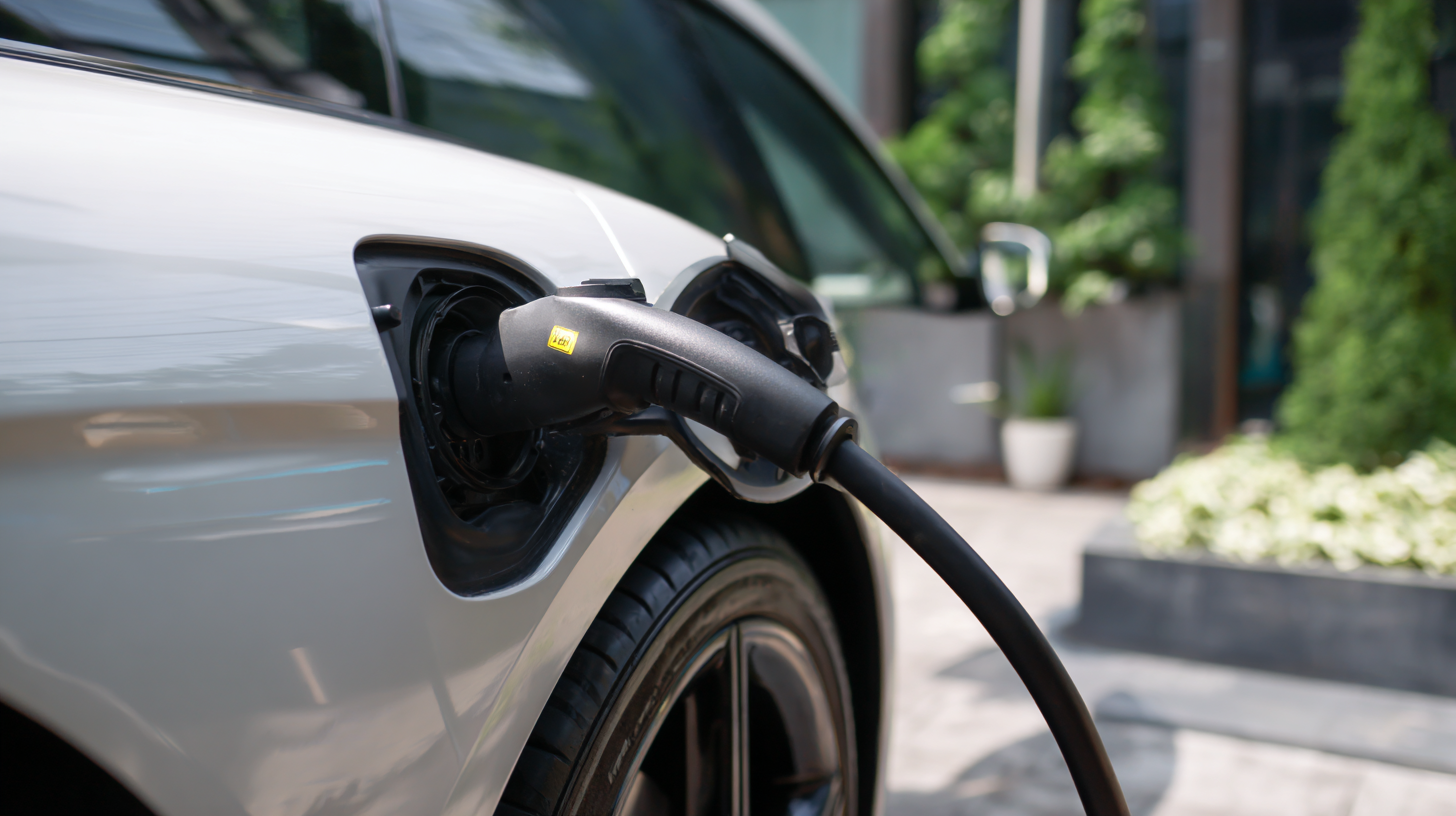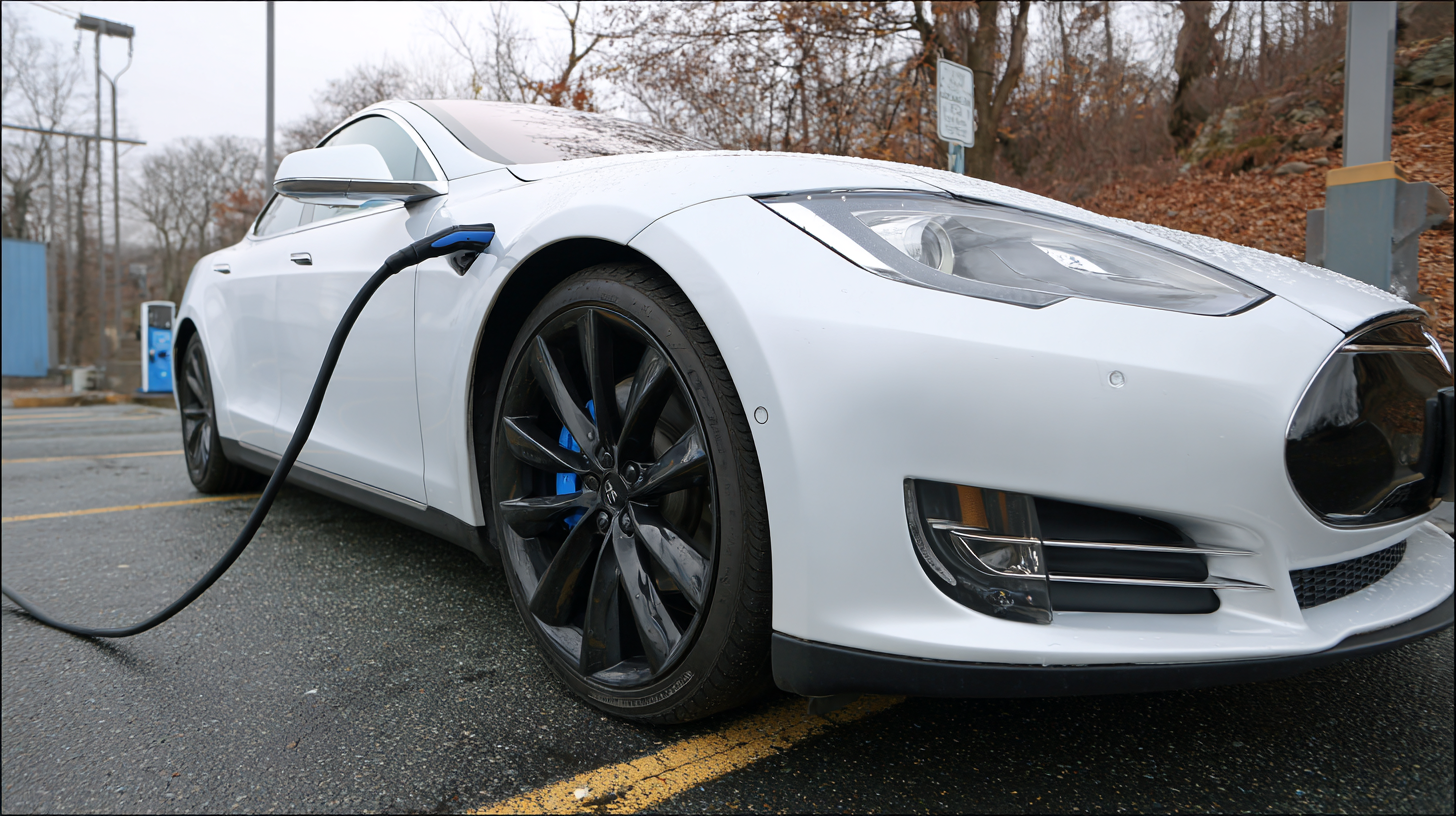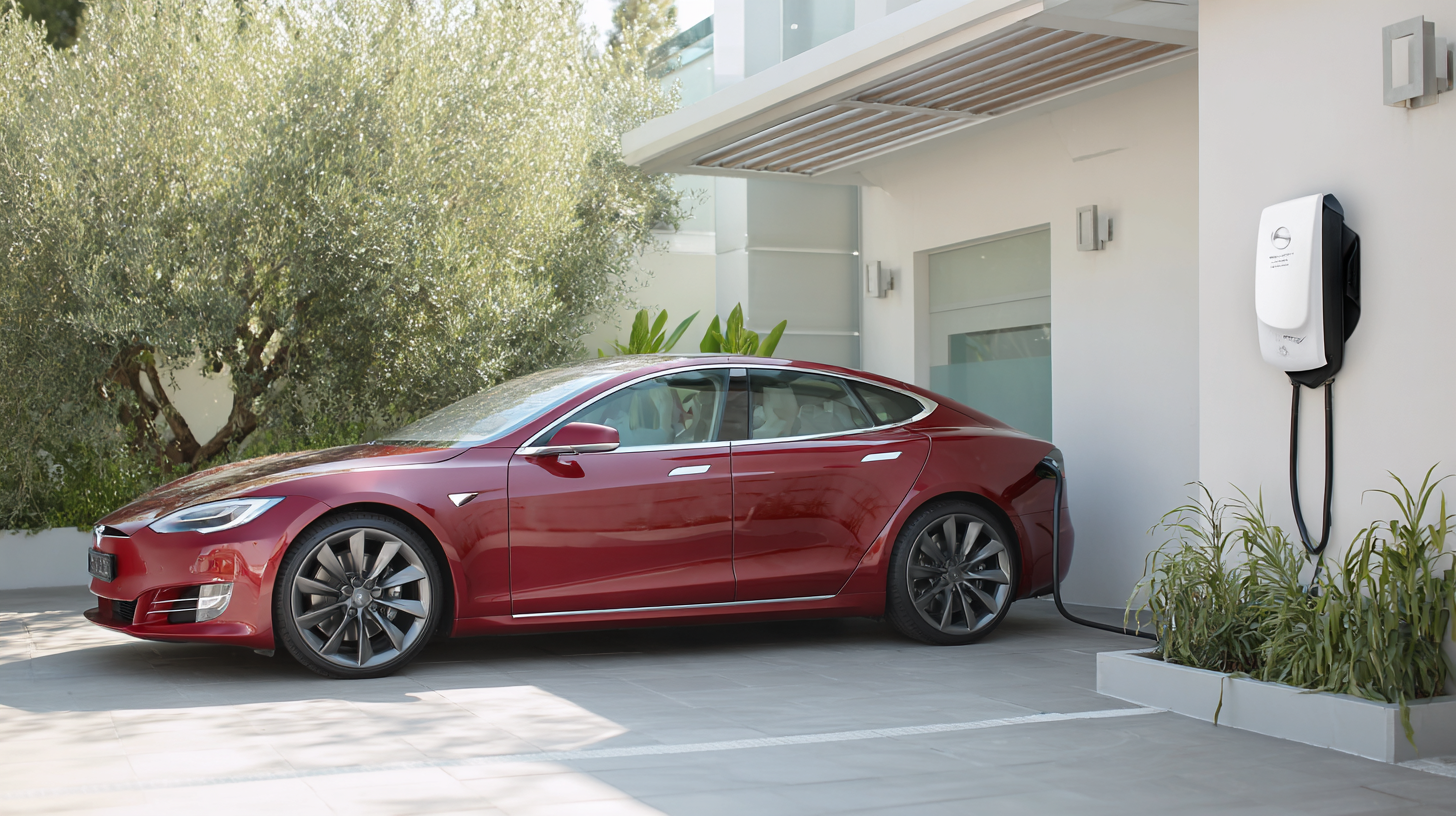
Wall Mounting EV Charge Station
7 Tips for Choosing the Best AC Ev Charging Cable for Your Electric Vehicle
As the electric vehicle (EV) market continues to expand, with a projected growth rate of 22% CAGR from 2021 to 2028, the demand for reliable charging solutions is more critical than ever. One essential component for EV owners is the AC EV charging cable, which plays a pivotal role in ensuring efficient and safe charging processes. According to a recent industry report, the global market for EV charging cables is expected to reach $4.1 billion by 2026, driven by increasing EV adoption and advancements in technology. With various types of cables available, selecting the best AC EV charging cable is vital not only for compatibility with your vehicle but also for optimizing charging speed and safety. In this blog, we will explore seven key tips to guide your decision-making process, ensuring that you choose the right cable to meet your electric vehicle's needs effectively.

Understanding AC EV Charging Cable Types and Their Importance
When it comes to electric vehicle (EV) charging, understanding the different types of AC EV charging cables is crucial for maximizing efficiency and safety. According to a report by the International Energy Agency (IEA), as of 2023, AC charging stations make up approximately 80% of all charging points globally. This prevalence underscores the importance of selecting the right charging cable for your needs.
One essential tip for choosing the best AC EV charging cable is to ensure compatibility with your vehicle's port. Most EVs use either Type 1 (SAE J1772) or Type 2 (IEC 62196) connectors, and knowing which one suits your car will prevent any inconvenience. Additionally, consider the cable's amperage: higher amperage cables can charge your vehicle more quickly, but it's important to match the cable with your home’s electrical capacity. Industry data reveals that a 32-amp charger can reduce charging time significantly compared to a 16-amp charger.
Another key factor is cable length. While cables typically range from 16 to 25 feet, longer cables offer flexibility in parking scenarios. However, longer cables can mean more resistance and longer charging times. As the EV market continues to grow, understanding these aspects of AC charging cables is vital for any EV owner looking to enhance their charging experience.
Key Factors to Consider When Selecting an EV Charging Cable
When selecting an AC EV charging cable, several key factors should be kept in mind to ensure you make the best choice for your electric vehicle. First, consider the compatibility of the cable with your vehicle model. Not all charging cables fit every EV; therefore, it’s crucial to verify that the cable you choose is suitable for your specific make and model. Additionally, check the power output of the cable. Higher wattage cables enable faster charging, which can significantly reduce downtime, especially if you’re often on the go.
Another important factor is the length of the charging cable. A longer cable provides more flexibility in where you can park your vehicle while charging, which can be particularly useful in tight spaces or public charging stations. Furthermore, assess the durability and material construction of the cable. Charging cables exposed to outdoor conditions should be robust and weather-resistant to prevent wear and tear. Features such as built-in safety mechanisms against overheating and overcurrent are also vital, as they offer added peace of mind while charging. By keeping these factors in mind, you can select an AC EV charging cable that meets your needs efficiently and safely.
AC EV Charging Cable Comparison
Navigating Import and Export Certifications for EV Charging Equipment
When selecting the best AC EV charging cable, understanding the importance of import and export certifications for EV charging equipment can significantly enhance your purchasing decision. Certifications ensure that the charging cables meet local safety and performance standards, providing peace of mind for both the consumer and manufacturers. Common certifications include UL, CE, and IEC, which validate that the equipment has undergone rigorous testing for safety and reliability. Missing these certifications can lead to potential hazards, including overheating and electrical failures, making it crucial to scrutinize the documentation provided by manufacturers.
In addition to safety, navigating import and export certifications also has implications for the long-term viability of your charging solution. Different countries have different regulations that may affect the availability and pricing of EV charging equipment. For example, cables certified in one country may not be recognized elsewhere, causing delays and complications. By selecting cables that have internationally recognized certifications, you not only ensure compliance but also future-proof your investment, as they are more likely to be accepted across diverse markets. This proactive approach can save time and resources while maximizing your electric vehicle charging experience.
7 Tips for Choosing the Best AC Ev Charging Cable for Your Electric Vehicle - Navigating Import and Export Certifications for EV Charging Equipment
| Tip | Description | Certification Requirements | Compatibility |
|---|---|---|---|
| 1. Check Cable Length | Ensure the cable length meets your charging location needs. | Verify compliance with local regulations. | Compatible with your vehicle’s charging port. |
| 2. Amp Rating | Select a cable with appropriate amp rating for your EV. | Must meet ampacity requirements in your region. | Matches the electrical output of your charger. |
| 3. Cable Material | Choose durable materials that resist wear and tear. | Ensure materials are compliant with safety standards. | Check for compatibility with various charging stations. |
| 4. Weather Resistance | Select cables rated for outdoor use if necessary. | Must comply with environmental safety regulations. | Ensure functionality in various weather conditions. |
| 5. Connector Type | Identify the connector type compatible with your vehicle. | Check for international standard certifications. | Ensure it fits both your vehicle and charging station. |
| 6. Brand Reputation | Research brands with positive reviews and reliability. | Verify product certifications and compliance records. | Look for brands that support a wide range of EVs. |
| 7. Price Comparison | Compare prices across different suppliers for the best deal. | Ensure cost reflects quality and certification status. | Look for discounts on compatible models. |
Safety Standards and Regulations for AC EV Charging Cables
When selecting the best AC EV charging cable for your electric vehicle, understanding safety standards and regulations is crucial. Compliance with established safety standards such as IEC 62196 and SAE J1772 ensures that your charging cable is reliable and safe for use. These standards not only focus on the electrical characteristics but also on the materials used, ensuring durability and fire resistance. According to a report by the International Energy Agency, the global EV market is expected to increase dramatically, making adherence to these standards even more critical for manufacturers to ensure user safety.
 In addition to safety standards, you should consider the cable's amperage and voltage compatibility. Most home charging stations work on a 240-volt supply, but it's essential to ensure your cable can handle the necessary amperage to match your vehicle's charging speed. For optimal performance, look for cables that support at least 32A charging capabilities.
In addition to safety standards, you should consider the cable's amperage and voltage compatibility. Most home charging stations work on a 240-volt supply, but it's essential to ensure your cable can handle the necessary amperage to match your vehicle's charging speed. For optimal performance, look for cables that support at least 32A charging capabilities.
Lastly, pay attention to the cable's insulation and flexibility, especially if you plan to use it in varying weather conditions. A good tip is to choose cables with high-quality insulation to withstand extreme temperatures. This can significantly reduce the risk of wear and electrical hazards, ensuring a safe charging experience for your electric vehicle.
Best Practices for Maintaining Your EV Charging Cable and Ensuring Longevity
When it comes to maintaining your electric vehicle (EV) charging cable, a few best practices can significantly enhance its longevity. First and foremost, always store your charging cable properly. Avoid coiling it tightly, as this can lead to damage over time. Instead, use a loose loop or a dedicated cable organizer to prevent kinks and reduce strain on both the connectors and the cable itself. Additionally, keep the cable dry and free from exposure to harsh weather conditions; a protective case can be an excellent investment for safeguarding against rain or extreme temperatures.

Regular inspection is another key factor in ensuring your EV charging cable lasts as long as possible. Check for signs of wear and tear, such as frayed wires or damaged connectors, before each use. If you notice any issues, it's better to replace the cable rather than risk causing damage to your vehicle’s charging system. Furthermore, avoid using your cable in locations where it could be tripped over or subject to heavy foot traffic, as this can lead to accidental damage.
By following these best practices, you can keep your EV charging cable in optimal condition, ensuring it serves you well throughout its lifespan.

